Building a Strong Visual Identity with a Logo Design Portfolio
- Matt Jones

- Jul 14
- 4 min read
Creating a memorable and effective logo is more than just a design choice; it’s an integral part of building a brand's visual identity. A logo design portfolio showcases your unique style and serves as a powerful tool in defining your brand. In this post, we will explore the significance of a logo design portfolio, elements of a strong visual identity, and actionable steps to create an impressive portfolio.
The Importance of a Logo Design Portfolio
A logo design portfolio highlights your skills, showcases your creativity, and communicates your design philosophy. It’s not just about displaying logos; it’s a comprehensive representation of how logos communicate brand messages effectively. The right portfolio attracts clients who resonate with your aesthetic. Here are a few reasons why having a strong portfolio is beneficial:
First Impressions Matter: Your portfolio is often the first point of contact for potential clients. An eye-catching and well-organised portfolio can create a lasting impression.
Trust and Credibility: Showcasing previous work builds trust. A diverse portfolio demonstrates your experience and ability to cater to different industries and client needs.
Unique Branding: A well-crafted portfolio not only presents your work but reflects your personal or business brand. It helps differentiate you from competitors.

Key Elements of a Strong Visual Identity
Building a strong visual identity goes beyond just having a good logo. It encompasses various elements that work together to form a cohesive brand image. Here are some crucial components:
Color Palette
Colors evoke emotions and convey messages. Choosing the right color palette is essential in logo design. For instance, blue is often associated with trust and professionalism, while red may evoke passion and urgency. When developing your visual identity, consider how your color choices align with your brand values.
Typography
Fonts play a pivotal role in logo design. The typeface you choose should reflect your brand personality. For example, a tech startup might opt for sleek, modern fonts; a children’s brand could use playful, rounded letters. Consistency in typography across your logo and marketing materials enhances brand recognition.
Imagery and Icons
Using imagery and icons consistently in your branding enhances recognition. It’s vital to select images and symbols that align with your brand message. For example, a health food brand might incorporate natural elements like leaves or fruits to communicate its focus on wellness.

How to Create an Impressive Logo Design Portfolio
Creating an impressive portfolio involves more than just collecting your logo designs; it requires careful curation and presentation. Follow these steps to build a compelling logo design portfolio:
1. Curate Your Best Work
Select designs that showcase your range and expertise. Be selective; quality over quantity is key. Include designs that align with the types of clients you want to attract. If you specialize in a specific niche, such as tech or e-commerce, ensure that your portfolio reflects that focus.
2. Include Detailed Case Studies
In addition to showcasing visuals, include case studies that detail your design process. Explain your approach to each project, the challenges faced, and how you solved them. This insight into your thought process adds value to your portfolio.
3. Utilize High-Quality Images
Ensure that all images are high resolution and professionally presented. Poor-quality images can detract from your work. Consider using mock-ups to show how your logos will look in real-life applications, such as business cards or websites.
4. Create a Clear Structure
Organize your portfolio for easy navigation. Use categories or filters to help prospective clients find relevant work quickly. A well-structured portfolio enhances user experience and keeps visitors engaged.
5. Keep It Updated
Regularly update your portfolio to reflect your current style and capabilities. Outdated designs can give the impression that you are not actively engaged in your craft. Adding new projects keeps your portfolio fresh and relevant.
Showcasing Your Brand Story
When developing a logo design portfolio, it’s essential to communicate your brand story. Your brand narrative can resonate with potential clients and create a deeper connection. Consider these tips to showcase your story effectively:
1. Personal Brand Statement
Include a brief personal brand statement that articulates your mission, values, and design philosophy. This statement should reflect who you are as a designer and what you stand for.
2. Highlight Client Feedback
Testimonials and client feedback add credibility to your portfolio. Consider including quotes from satisfied clients regarding your design process and the impact of your logos on their brands.
3. Visual Consistency
Ensure that your portfolio follows the same visual style throughout. This consistency reinforces your brand identity and demonstrates your design skills.
4. Engaging About Page
An "About" page can provide visitors with insight into your experiences, inspirations, and background. Share your design journey and what drives your passion for logo design.
Final Thoughts: The Power of a Strong Logo Design Portfolio
Building a strong visual identity with a logo design portfolio is essential for any designer looking to attract clients. By carefully curating your work, showcasing your process, and communicating your brand story, you can create an impactful portfolio that resonates with potential clients.
Remember that your portfolio is a living document. Continuously refine and update it to align with your evolving style and the changing marketplace. Whether you are a seasoned designer or just starting, investing time in developing a strong logo design portfolio is vital in establishing your brand identity and securing logo design services for clients.

Taking these steps will not only enhance your visual identity but also lay a solid foundation for your design career. Be proud of your creations, and don’t hesitate to share them with the world.





Comments